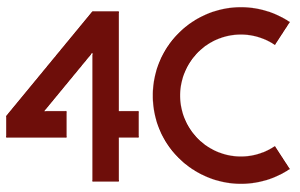So the big question is this, how do recruiting leaders like us who have 12 to 15 other job responsibilities win at this game of recruiting? How do we build a system that allows us to recruit effectively in a minimal amount of time while motivating recruits towards meaningful change? That is the question and this podcast will give you the answers. My name is Richard Milligan and welcome to Recruiting Conversations.
Hi everyone welcome back it’s your host to recruiting conversations richard milligan thanks for listening to this podcast today we are going to talk about reverse recruiting and when i talk about reverse recruiting what i mean is retaining your people because once you recruit someone to the team you ultimately have to be constantly recruiting them to stay on your team and there’s some markers that i have found that are key markers for leaders that not only recruit well but that also retain well what brings this topic to mind is i just came out of a conversation with a what i would call a dynamic leader this leader has built several billion dollars under their production this leader has retained over the last several years all but one person on a really large team and that could be a real challenge for those of you that are in industries where churn at the experienced sales person role is incredibly high in fact in certain energies industries like real estate insurance mortgages that tends to fall somewhere between 25 and 30 percent every single year so right here’s an aha for you as a leader that recruits that nothing is is static here like if you’re not growing you’re dying and it may not be today or this week or this month or even this year but at some level you will lose people and if you’re not building then when that moment comes the law of averages will actually play a role in the demise of your team and so if you have a team of 10 people in an industry that’s 30 percent churn and you look out just over three years you’ll have one person on that team if you have average retention churn and two years ago i was at a event in las vegas i was speaking at a sales rally for a company and the company was celebrating because the prior year they had 56 percent churn at the salesperson role and they reduced it to 39 percent year-over-year and i was thinking to myself as they’re celebrating this i was thinking to myself how in the world could we celebrate losing almost four out of every 10 sales people experienced sales people every single year and and so as leaders we have to be aware of this and then what we have to have as a plan to retain our people and there’s this intersection here that exists and the intersection that exists is where leading and recruiting overlap what i have found is that dynamic leaders find it easy to attract talent and find it easy to retain talent static leaders struggle to attract talent they struggled to retain their leaders so let’s just talk about that framework what makes up a static leader and what makes up a dynamic leader because this is the ceiling let’s just start with this premise a leader is always growing static leaders they really don’t challenge themselves to improve they don’t challenge themselves to go to events or to listen to podcasts or read a book those this is a clear marker on this leader who retains talent they’re always growing now the challenge in this is some of you are putting that check mark in the box the challenge is that dynamic leaders at times challenge themselves in ways to where they say yes to too many things i have someone since my coaching that currently is part of about nine coaching programs that i can best calculate and the challenge in that is that none of the ideas that are coming from the coaching programs can be executed and ultimately the ideas are crap it’s the execution that’s that’s in the win here and so if you’re a leader that’s that’s always growing or saying i’m always growing you have to determine where you say yes to this and where you say no to this because it’s the execution of the things that you’re learning it’s the execution of the ideas that are being shared that actually makes you a dynamic leader but the dynamic leader is always growing the static leader doesn’t challenge themselves to grow the other thing that i found as a marker on a dynamic leader is they actually want to change they actually want to innovate and static leaders they really shut down ideas internally there’s a way things have been to get to this point and they want things to stay the same the dynamic leader says there’s a way that things have been at this point and they realize that things are change is accelerating in the current business environment so a static leader in a meeting where someone shares an idea would shut down that idea would be what i would call a negative nancy on all ideas the dynamic leader says tell me more in fact i was in a recent team meeting and we’re being challenged innovate we have about 40 people on a team that actually manages the brand for um a large number of executive leaders and what we do is we represent attractive leadership within their brands and so we’re building their connections we call them the four c’s we’re building their connections we’re um producing content we’re communicating with their audience or engaging with their audience and we map out a conversion plan where they can actually use these platforms to actually convert recruits and so in that social media is always changing and we were really having a conversation around how do we continue to innovate in the content and the challenge was that some ideas were coming up and as a whole and i was even a part of this my current experience this moment has me saying that won’t work and so as this became kind of a repeated theme in this meeting one of the things i just paused said as a team instead of shutting down ideas what we need to be saying is tell me more and the leader who will lead with that tell me more is a leader who will actually be open to innovation that will be open to change and so that dynamic leader doesn’t shut down ideas from people on the team they actually ask people to share those ideas and expand on those ideas and even task people when they leave the meeting to continue dreaming around the idea so they can bring back more clarity to it because that will actually spur innovation and look if there’s ever a season to innovate in any industry in any business it’s now because things are changing a futurist said recently as i already speak he said that the current business environment in a single year it is the equivalent of the prior 200 years combined that things are moving so fast that we accomplish as much in terms of change in a 12-month window as we did the prior 200 years combined and so if we’re going to be dynamic leaders we’re going to have to spur idea sharing we’re going to have to ask people to tell us more around what ideas they bring to the table and then on the other side of that because there’s a continuation of this the execution of this is really critical because what i found static leaders do they’re very slow to change what dynamic leaders do is they understand that speed is currency in today’s world money is no longer money the execution the speed of the execution is what’s actually money today so leaders who are slow to change are static leaders who are dynamic are very quick when they have clarity on the idea they understand that speed and executing on that idea is critical because that’s where the win is found so those are things that make up static versus dynamic leaders and if you’ve ever met with one in a recruiting conversation it’s incredibly easy to determine which one is which which one has fresh ideas which one has energy because they’re growing which one has this concept of team and really spurs this uh this idea of tell me more within the team the team the leader who’s leading the team that actually is executing on the idea quickly you can feel that in a recruiting conversation so with all that being said here’s where here’s what this looks like internally as a leader you should have a value ladder and and if i could visually draw this for you it’s literally a ladder where there’s a rung on each one and there’s something of value there that you give to the team because what happens as a leader when you have a value ladder is that you create interdependency this interdependencies this idea that you’re dependent upon me as a leader upon this team to actually answer questions solve problems and actually spur you on to grow if you have a team that is externally dependent that team is finding answers to problems finding solutions to problems is being spurred to grow externally and look if i take two industries the real estate industry and the mortgage industry and those two industries alone one of the things i know about both those industries is that they are highly externally dependent upon those things so to a place where it actually undermines the ability to retain people long term and look i’m an external coach so but what i understand is if i push my people outside the organization to get coaching push them outside the organization to actually improve their ideas then i am not insulating this team to retain them and a leader who understands this understands that i bring you in on a single rung of where i give you value and that value might be you’re a producer and you’re doing 12 million a year and i’m going to bring you in on this first value ladder rung where we go from 12 to 20 million in 12 months and i’m bringing you value in that space building up building systems building process helping you understand scripting the things that actually limit that person that’s at 12 million to get to 20 million that’s the first wrong on the value ladder but when that person gets to 20 million what’s next how do they get to 50 million and as a leader you’ve got to be asking yourself do i have the capacity to take that person from 20 to 50 million and if you don’t you just identified your next wrong that you as a leader need to build or you can give value when they get to 50 how do they get to 100 when they get to 50 maybe they want to become a leader and they want to build their own team do you have a rung on your value ladder internally that says i have a leadership development plan to get you from a producer mindset to a leader mindset what are the key things that a producer needs in order to really become a leader if you’re in an industry where 25 to 30 percent churn is normal one of the things you have to be able to do to succeed is recruit so that can be a qualifying factor are you willing to go on the journey of growth to actually improve your recruiting skill set because if you can’t recruit in certain industries you really can’t lead because your capacity to grow versus retaining right there’s an intersection here one we’re recruiting and leading overlap so if you grow as a leader you’ll be a great recruiter you’ll also if you grow as a leader be a great retainer of your people so there’s an intersection here that that needs to be on the value ladder and you continue to ask yourself what’s next to bring my conversation full circle with the coaching client the challenge was that right now he’s built teams and the leaders of these teams don’t have the capacity to to really and the insight and the ideas to build their operational capacity so always comes back to him and the team his personal team to facilitate that and for him that’s becoming a ceiling he’s got several billion dollars under his umbrella he has people saying i need more operational capacity but i don’t understand how to build that team we need help from you and now the challenge for him is that is the next rung on his value ladder because what all great leaders do is they duplicate building other leaders they build other leaders right and that’s that’s the next a challenge for him as leader is to bring other people in to grow their their capacity to produce when someone wants to actually continue to grow their capacity to produce or wants to build a team how do i take that individual and give them the tools lead them to a place where they have the tools and the the um mindset to do what they need to do to remove the ceiling that exists within that team and so for you as a leader there’s tension in some of these places there’s tension because you’ve got producers who are at capacity that need to grow and you need that next value that next rung on your value ladder you have leaders on the team that may be producers that want to take on that leadership role and you need some sort of development program that takes them to this place where they are leaders you’ve got leaders that don’t have the capacity to hire the right people to build the operational capacity you’ve got leaders that don’t have the recruiting tools or the recruiting mindset or the recruiting skills they need to actually build the team and that then becomes the place your attention should identify what value wrong is missing on your current value ladder as a leader and you go build that now because here’s what a true statement that i have said for years in the mirror to myself growth is the natural progression of great leadership growth is the natural progression of great leadership so where i see there being a ceiling on my team on a ceiling on my organization i have to look in the mirror and say it’s my responsibility to build the next rung on that value ladder that removes the ceiling for growth and so as a leader who recruits these are all things that you have to think about in the season that you’re in and so as we come into the end of 2021 we’re in november we’ve got about 60 days left before we see the beginning of 2022 it’s a perfect time to be thinking about the next year and where you will grow as a team because one of the things i love is that dynamic leaders what they do is they always book end years they celebrate that year here’s where we’ve been and sometimes it’s not a celebration it’s actually just a a a realistic conversation of what we accomplished this year but as we look forward we’re always casting vision that’s a dynamic leader dynamic leaders are always casting vision vision is this ability to look at the future and to clearly articulate where we’re going at a place where it feels real because we’ve communicated so well and so as you’re assessing all this your vision for 2022 can take some of these pieces and and and improvise where you’re going to go identify where you’re going to go where you’re going to grow in the 2022. so you want to be a dynamic leader growth is a natural progression of great leadership hope this brought you some value today you know how to find me if i can bring you value i’ve got live calendar book richardnow.com if i can do anything to help you as it relates to recruiting you can connect with me on all my social platforms we’ve been blessed on this podcast actually topped the top 30 on itunes marketing category a number of times this year thank you so much because i know that means that you’re promoting this to people that it’s brought value to you and so you’re sharing it if there’s someone that needs to hear this message please share with them let’s continue this journey of spurring recruiting leaders on in the area of improving their recruiting skill set their leadership skill set until i talk to you again another podcast here on recruiting conversations thanks so much everybody have a great week
Want more recruiting conversations? You can register for my weekly email at 4Crecruiting. com. If you need help creating your own unique recruiting system, you can book a time with me at BookRichardnow.com
Why Dynamic Leaders Grow And Static Leaders Struggle To Grow
Want more updates like this?
Subscribe to our newsletter for more content like this delivered to your inbox!
From Cold to Gold: Engaging Recruits on a Deeper Level
February 19, 2024
Your Phone Script Sucks – Here’s How-To Change That
February 13, 2024
Why Your Onboarding Process Is Your Secret Recruiting Weapon
November 1, 2023
Creating Your Vision
October 19, 2023





